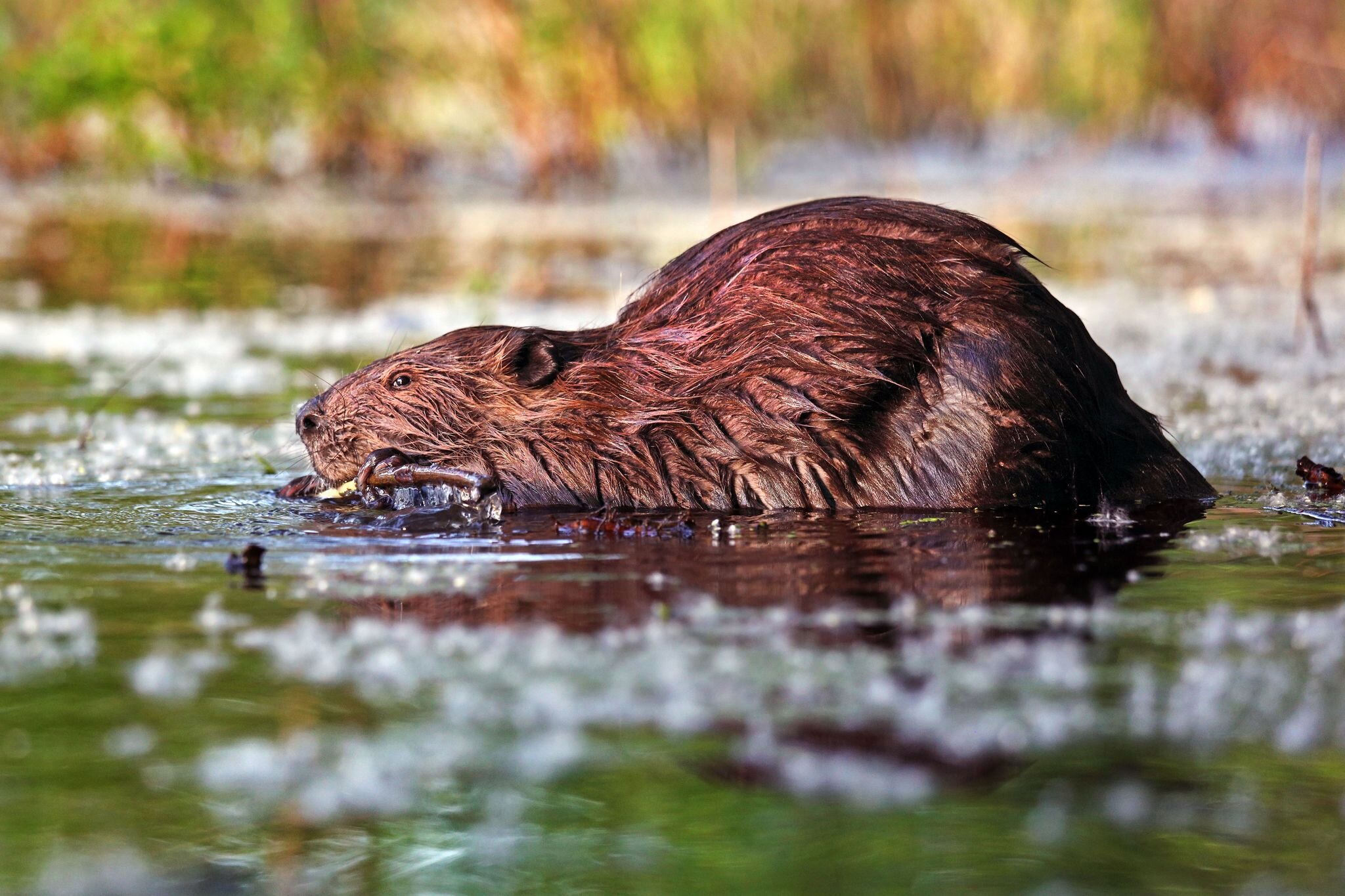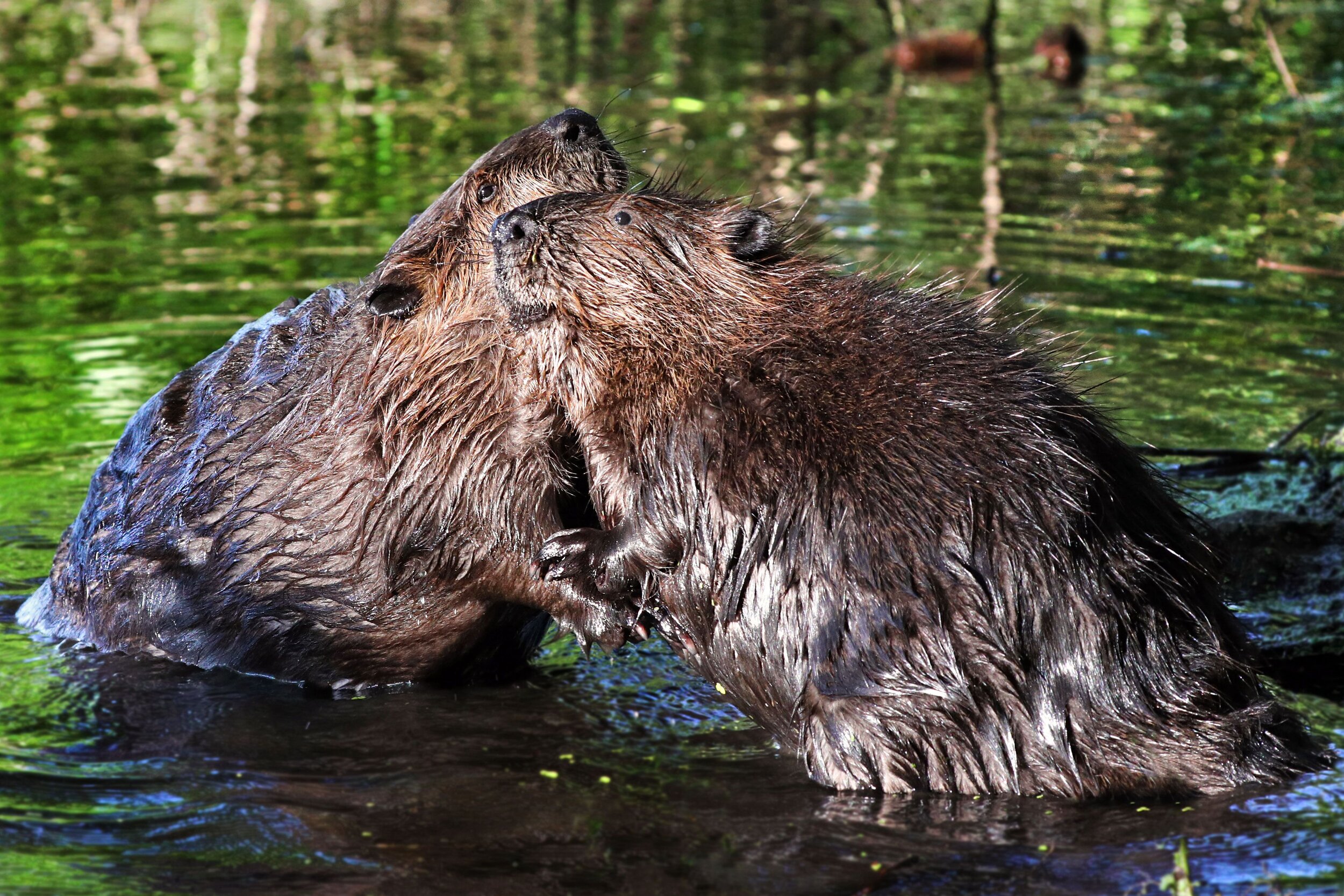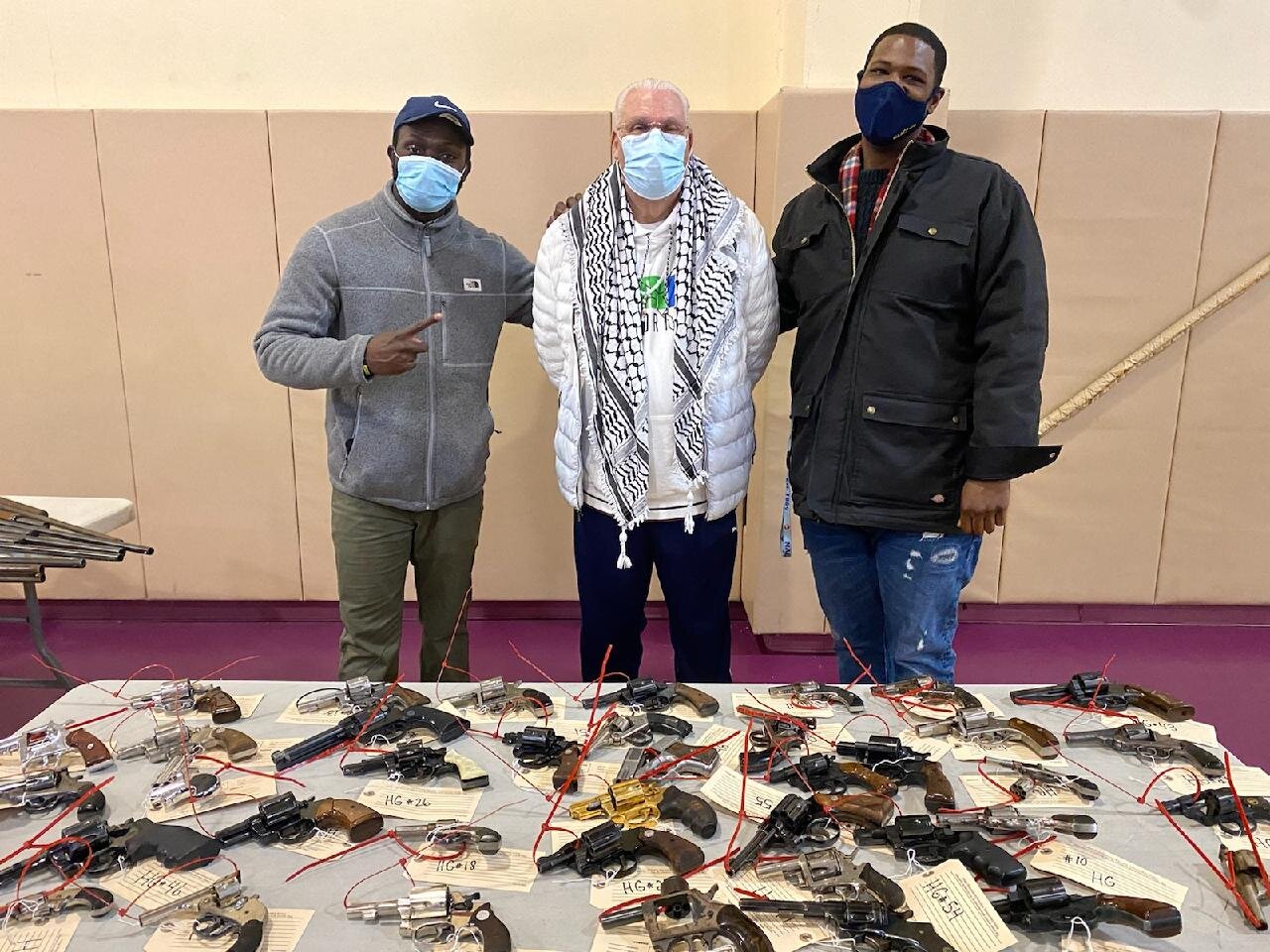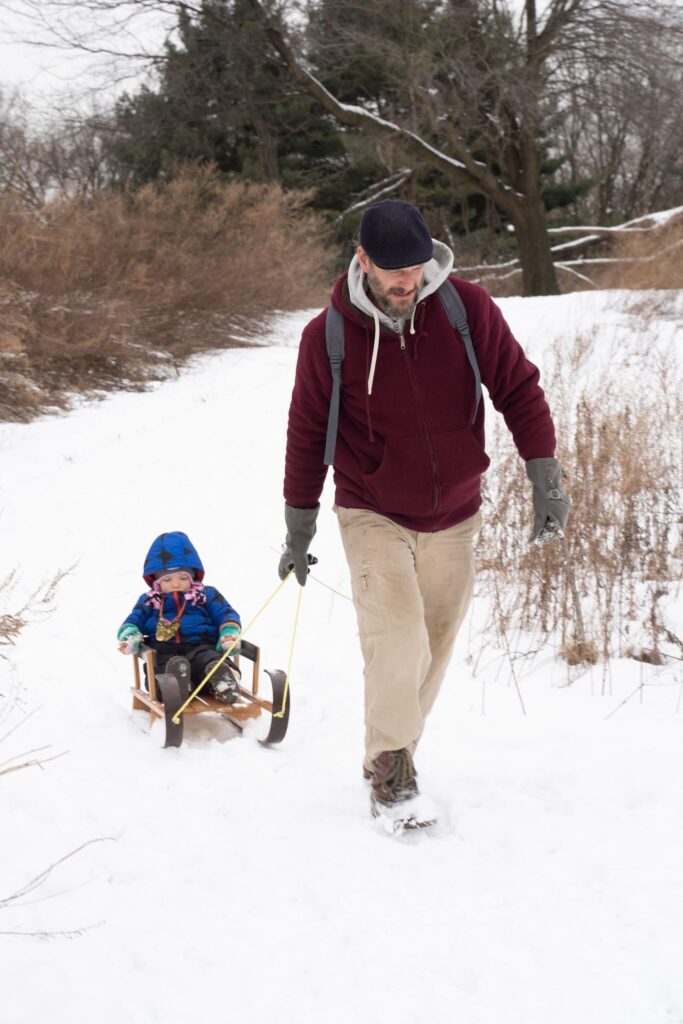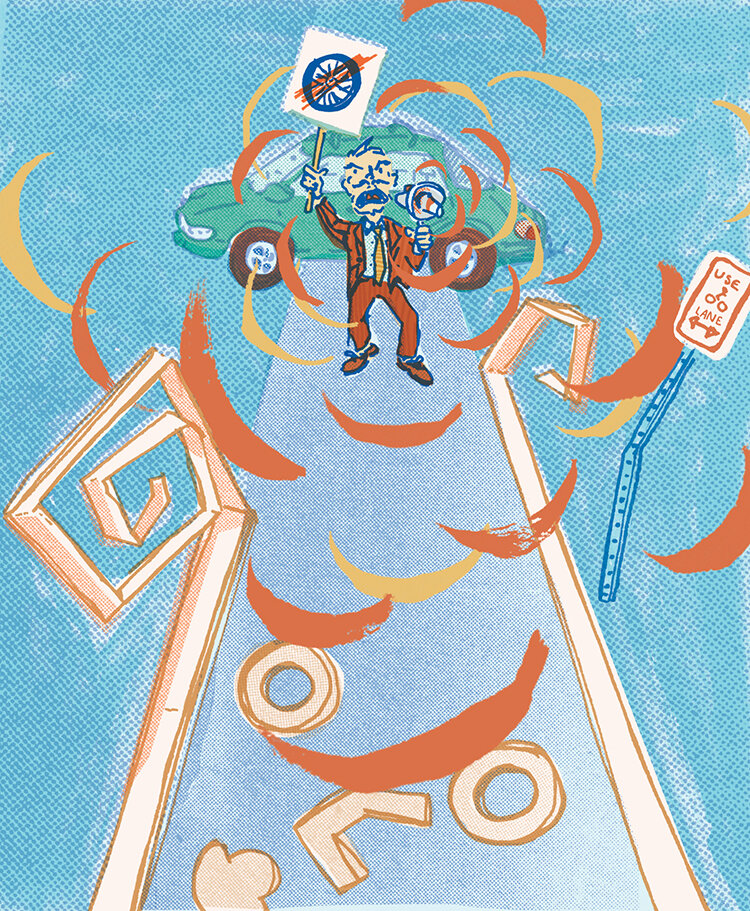Of course the toothy mascot on Chris Muller’s bright orange cap is a beaver.
“Oregon State,” he explains.
I should have known. We are meeting up on Martin Luther King Jr. Drive at the Fairmount Dam, where we could talk while admiring the view—not of the Philadelphia Museum of Art, the Fairmount Water Works or Boathouse Row—but of the beaver lodge on Silt Island.
Muller is the human behind Beavers Matter, a website and social media project that educates Philadelphians about the large aquatic rodents that share our city.
“Mama Beaver,” the beaver who serves as the face of the photo project, crossed paths with Muller as he was running at the John Heinz National Wildlife Refuge in 2018. Muller didn’t immediately know what he was looking at.
“I barely got a picture with my cell phone,” he recalls.
Mama Beaver crossed the path the next morning, and this time Muller was ready with his camera. “That’s really what kicked the whole thing off: the surprise encounter and then the predictability of this. That I could go back to the same place at the same time and learn something new every time.”
Like many Philadelphians, Muller didn’t realize that our waterways are home to a lot of beavers. The large rodents—around 50 pounds and 3 feet long—do a good job of staying out of our way. They mostly stick to the water, usually only climbing out to feed and gather building material early in the morning or at night.
Nonetheless, it is easy to spot their work.
You can see the stumps they leave behind at the refuge where Muller and Mama Beaver first met, as well as along most of Philly’s rivers and creeks. On the iNaturalist app you can see photos from the Navy Yard up the Delaware to Pennypack Creek, as well as along Cobbs Creek, Tacony Creek and the Schuylkill River.
Beavers have returned to claim waterways that were theirs before Philadelphia was Philadelphia. Trapping to feed the trade in beaver pelts between the Lenape and the Dutch in the 1600s extirpated beavers by the time William Penn established his colony. The demand for their soft, warm furs wiped out most of the beavers in eastern North America by the end of the 19th century. Their populations only began to recover in the mid-20th century as game agencies, including the Pennsylvania Game Commission, released beavers trapped out West. From there, beavers spread across the state, becoming common in Philadelphia only in the last 15 years.
Muller spent a year and a half photographing beavers and learning about them before he launched his website.
“I realized that there was a lot of content on the internet that was geared for the ‘beaver believers,’ and there was a bunch of content of cutesy photos and such,” Muller says. “But there wasn’t a lot in terms of photography in the wild showing the breadth of what they can do, especially in an urban setting.”
Today BeaversMatter.org shows beavers at work and play, irrepressibly adorable but all-wild. Along with Mama Beaver’s family, Muller has photographed beavers throughout Philadelphia, its suburbs and in the New Jersey Pine Barrens.
Of course beavers are cute, but Muller has also made a point of showing beavers in all their engineering prowess, toppling trees and building dams.
The creatures also have wide-ranging influence.
By damming streams, beavers create ponds that eventually fill in with sediment and become wetlands, which act as water filters in river systems. Over time trees take over the wetlands, and the cycle begins again. The result is a dynamic landscape with a variety of habitats. “They create ecosystems that benefit plants and animal life,” Muller says. “They improve water quality and they return habitats to a more natural state.”
This past summer a major storm flooded out the beavers on Silt Island, just above the Fairmount Dam.
With the river raging and their lodge underwater, the beavers took refuge amid the neoclassical marble architecture of the Fairmount Water Works. A Twitterstorm followed the rainstorm, with concerned observers assuming the beavers had been swept downstream from somewhere outside the city, somewhere less urban and more wild.
“I had to create a Twitter account just to respond, saying ‘No, no. If you see the beavers there, leave them alone. They live there,’ ” Muller says.
And indeed as the flooding subsided, the beavers got back to work in the river.


